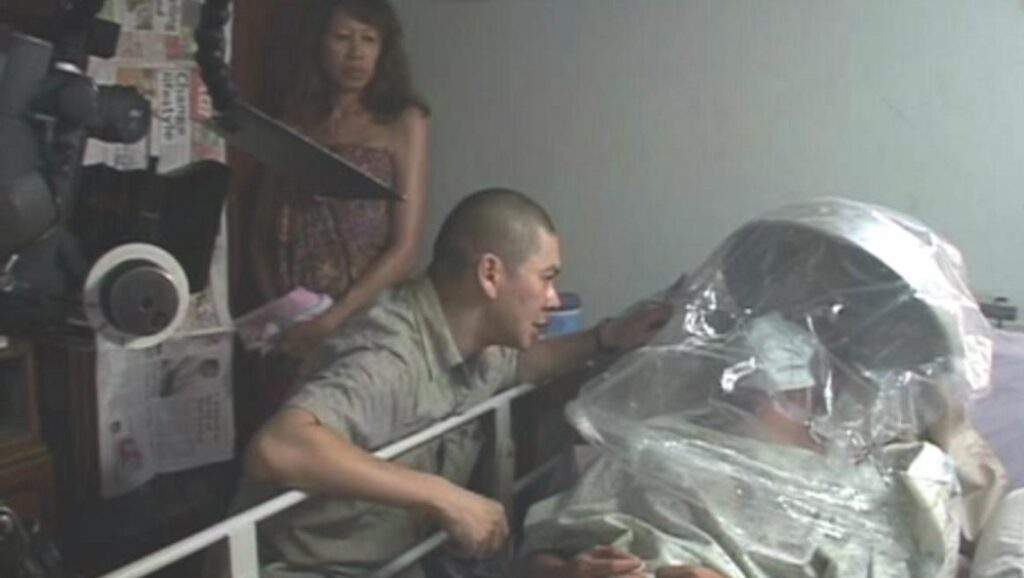Given his relative renown amongst a certain type of adventurous, festival-savvy cinephile, interviews with Tsai Ming-liang tend to focus on either the ‘slowness’ of his films or their symbolic meanings. The short, behind-the-scenes documentary Sleeping on Dark Waters, released in 2008 but made from footage while Tsai was shooting his 2006 film I Don’t Want To Sleep Alone, offers a welcome peek into the filmmaker’s process. Unlike similar essayistic undertakings by Godard and Kiarostami, this documentary doesn’t necessarily stand on its own; though it is a fascinating object, its main value is as an addendum to I Don’t Want to Sleep Alone. Tsai’s films tend to be collections of carefully framed master shots that depict, in real time, various actions and movements — like someone preparing a meal, or eating, or carrying an object from one space to another. Sleeping on Dark Waters demonstrates just how carefully orchestrated Tsai’s approach is; he is not simply capturing serendipitous events, but meticulously crafting the pacing and timing of these movements. Viewers familiar with I Don’t Want to Sleep Alone will recall a scene early in the film, after Norman Atun has brought an injured Lee Kang-sheng into his home, where Atun fumbles about putting a small bag of mysterious liquid on Lee’s head. In this quiet moment of deadpan amusement, he gingerly places the bag to keep it from sliding off, then fastens a larger plastic bag to keep it in place.
Sleeping on Dark Waters demonstrates just how carefully orchestrated Tsai’s approach is; he is not simply capturing serendipitous events, but meticulously crafting the pacing and timing of these movements.
Sleeping on Dark Waters shows us the scene being filmed. As Tsai sets up for another take, he personally instructs Atun on where to place the props and how to vary his movements, and later even tells a production assistant which plastic bag he wants in the shot (he asks specifically for a 7-Eleven bag). In another long sequence, we see the crew filming what amounts to a deleted scene, as it doesn’t exist in the film proper. Here, crew members are piping smoke into a small cafe (clouds of smog choking the city is a plot point and key visual motif in I Don’t Want to Sleep Alone); assistants are placing masks on extras seated at the various tables, instructing them to speak and act naturally while they play mahjong. An old man wants to smoke while wearing his mask, so the crew keep cutting a hole in the mask so he can puff away. It never quite works, and the mask goes on and comes off again and again, the hole getting bigger and bigger, each time making the mask more askew on the man’s head. The repetition becomes a comedy of errors. To give the documentary some structure, Tsai organizes scenes as a series of individual moments broken up by title cards that briefly discuss everything from the plight of migrant workers and the political climate of Malaysia at the time of shooting to a wistful reminiscence of listening to Cantonese operas with his grandfather. Sleeping on Dark Waters gives us glimpses of the master at work, pulling back the curtain on his process of manipulating naturalism into a carefully modulated edifice.


Comments are closed.